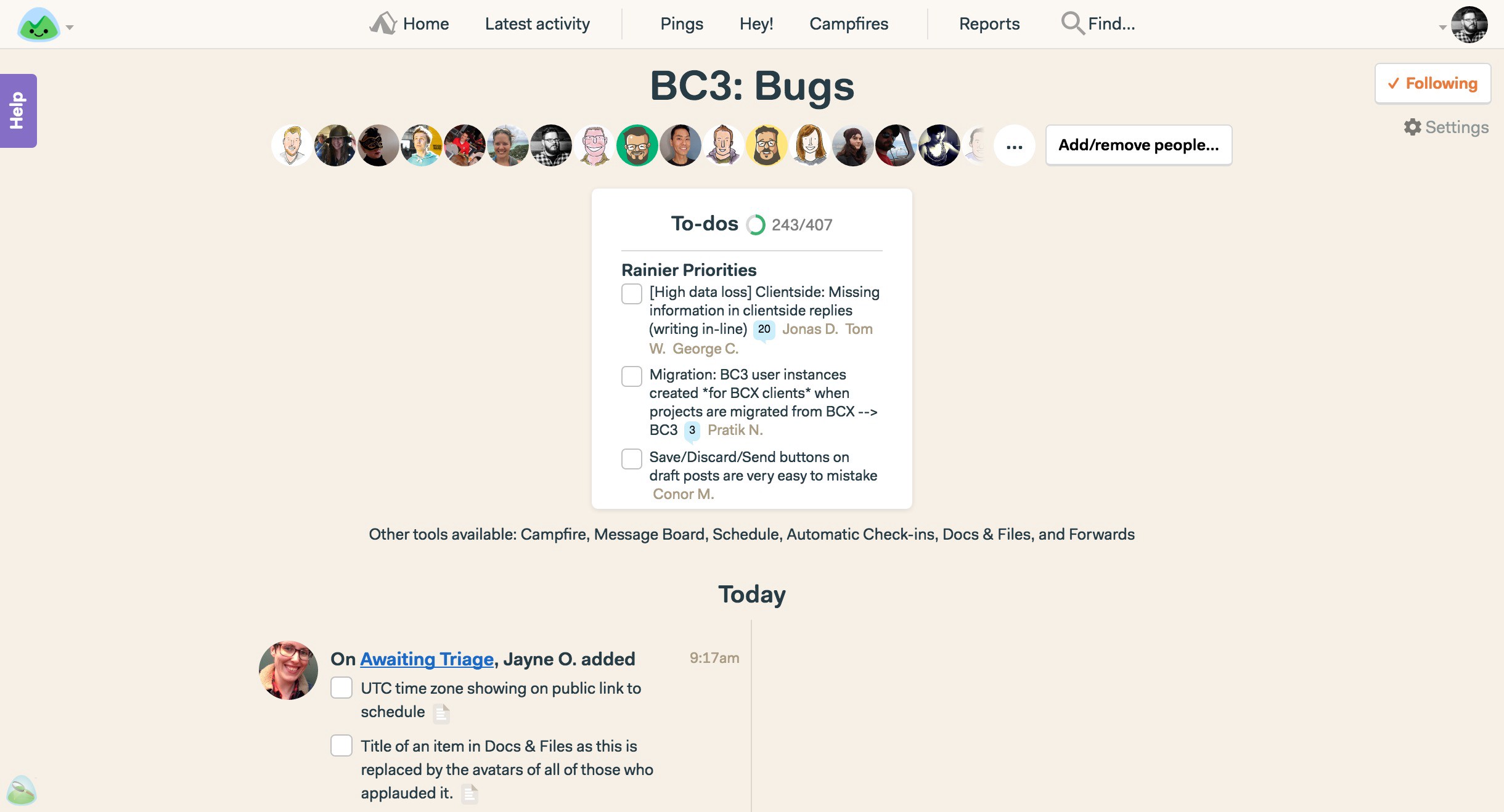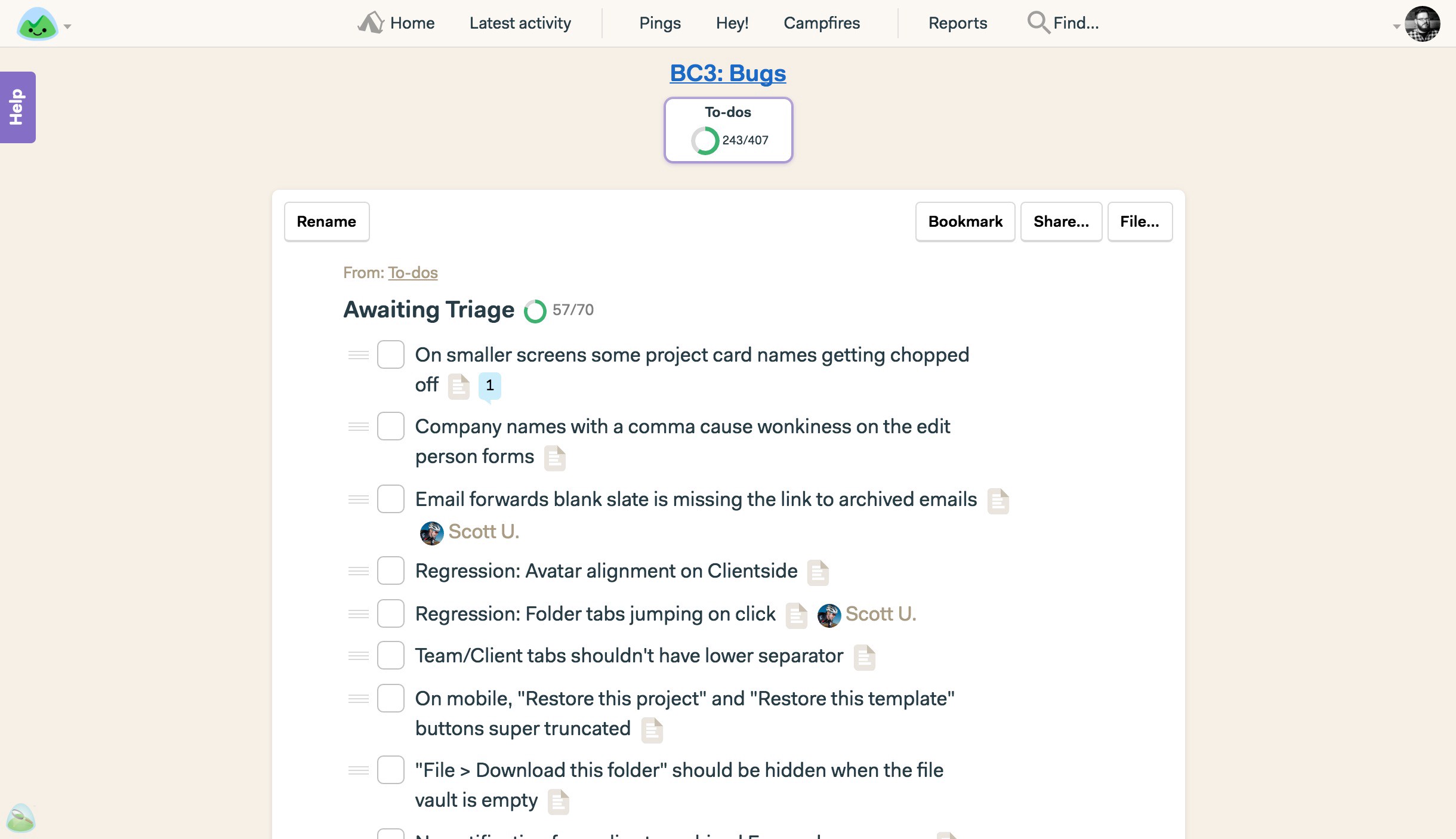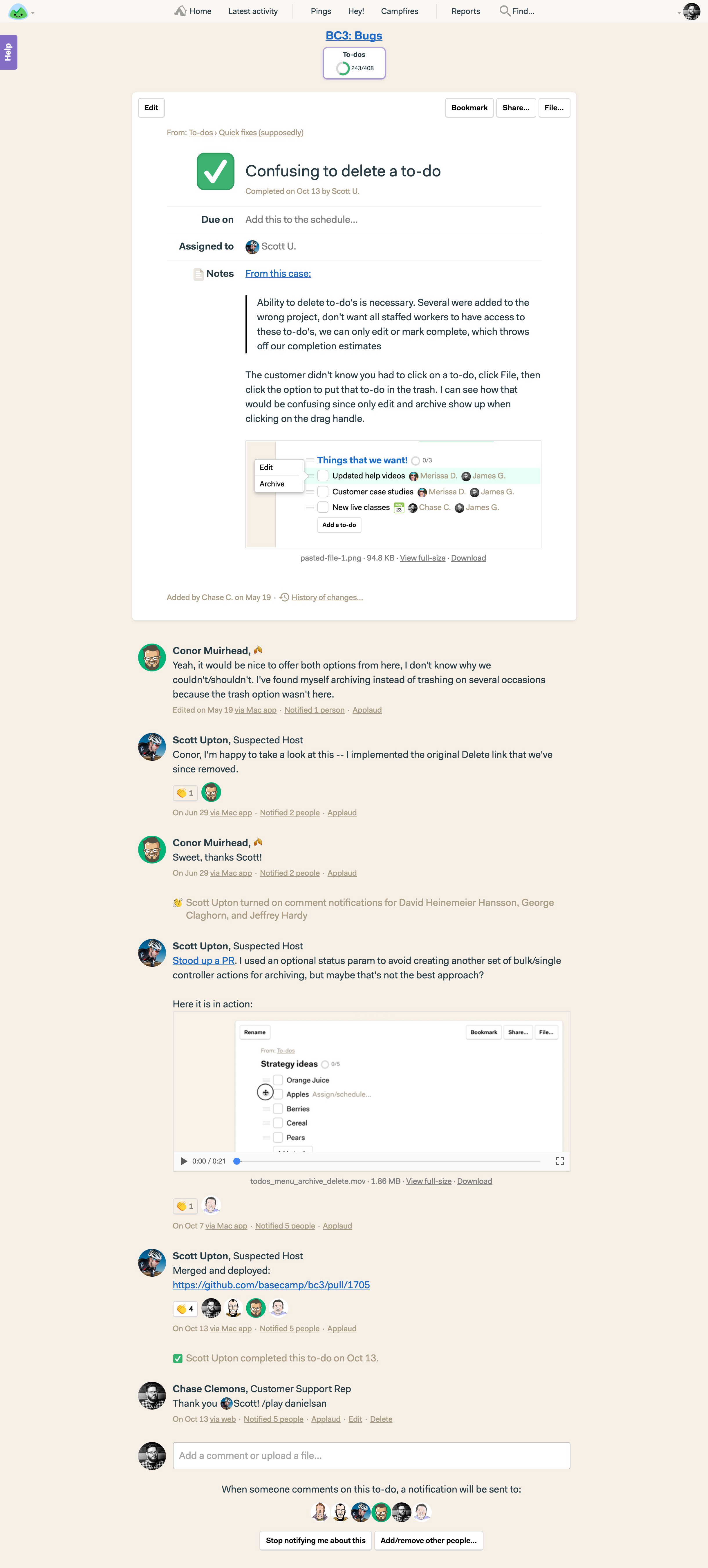An inside look at how we handle bug tracking with Basecamp 3.
Ksenija had a great question from my last “How We Work” post.
One thing that interests me the most is do you have some kind of automatic integration between Help Scout and Basecamp or do you manually write important things in BC?
Why I’m interested in that is because I would like to know how do you associate BC to-do for engineer (if engineer support is needed and if you resolve support issues over to-dos) with concrete customer issue in Help Scout!
With our setup, we don’t have any automatic integrations between Help Scout (the customer support app we use) and Basecamp. Through a few nifty Zapier integrations, you could absolutely set something up like that. But we’ve chosen to keep things a bit more simple for us.
Here’s how we handle interactions between our support team and programmers when it comes to bugs.
Isolated Bugs
Most of the situations we see on a daily basis are one-off problems. Maybe a Doc is acting weird because of some HTML that was pasted into it. Or a file isn’t downloading because something went wrong with uploading it.
For these customer emails, we assign it to an “on call” folder in Help Scout itself. We’ll also leave a note with any info that might be helpful for our support programmers working. From there, they’ll take a look, fix up whatever the problem was, and assign it back. That’s when we let the customer know it’s fixed up.
Bigger Bugs
Sometimes we’ll find bugs and issues that are out-of-scope for the on-call developer team. Those are usually something that’s affecting all of our customers rather than just an isolated person. When that happens, it’s added as a to-do inside Basecamp.
We have a project called “BC3: Bugs” to keep track of them. That project only has one tool enabled — the To-dos list.

The first stop for every new bug is the “Awaiting Triage” list. This allows us to have an easy place to quickly add in new bugs as to-dos.

The to-do name is kept short for easy reference. The notes field contains any details, screenshots, links back to a Help Scout case, or anything else that might be helpful.
From the “Awaiting Triage” list, the bug is then either assigned out or taken by someone that sees one they want to fix. Here’s a full thread where the bug was added as a to-do, discussed, and then fixed.

From the support side, I was notified throughout the process and could keep our customer in the loop. Once Scott fixed things up, he checked off the to-do as complete. Then I emailed the customer with the good news.
It’s in Basecamp!
Keeping it in Basecamp this way means everything is in one place. I don’t have to add a bug to some other app and then link it back to Basecamp. Our programmers and designers only have one place to check for new bugs. Everything’s kept right there in Basecamp for everyone to see.
If you found this article helpful, click that 💙 button below. Thanks!
Finding it tough to keep your support team (or any other team) on the same page? Give Basecamp 3 a shot. It’s a free 30-day trial. Teams simply run better on Basecamp.

